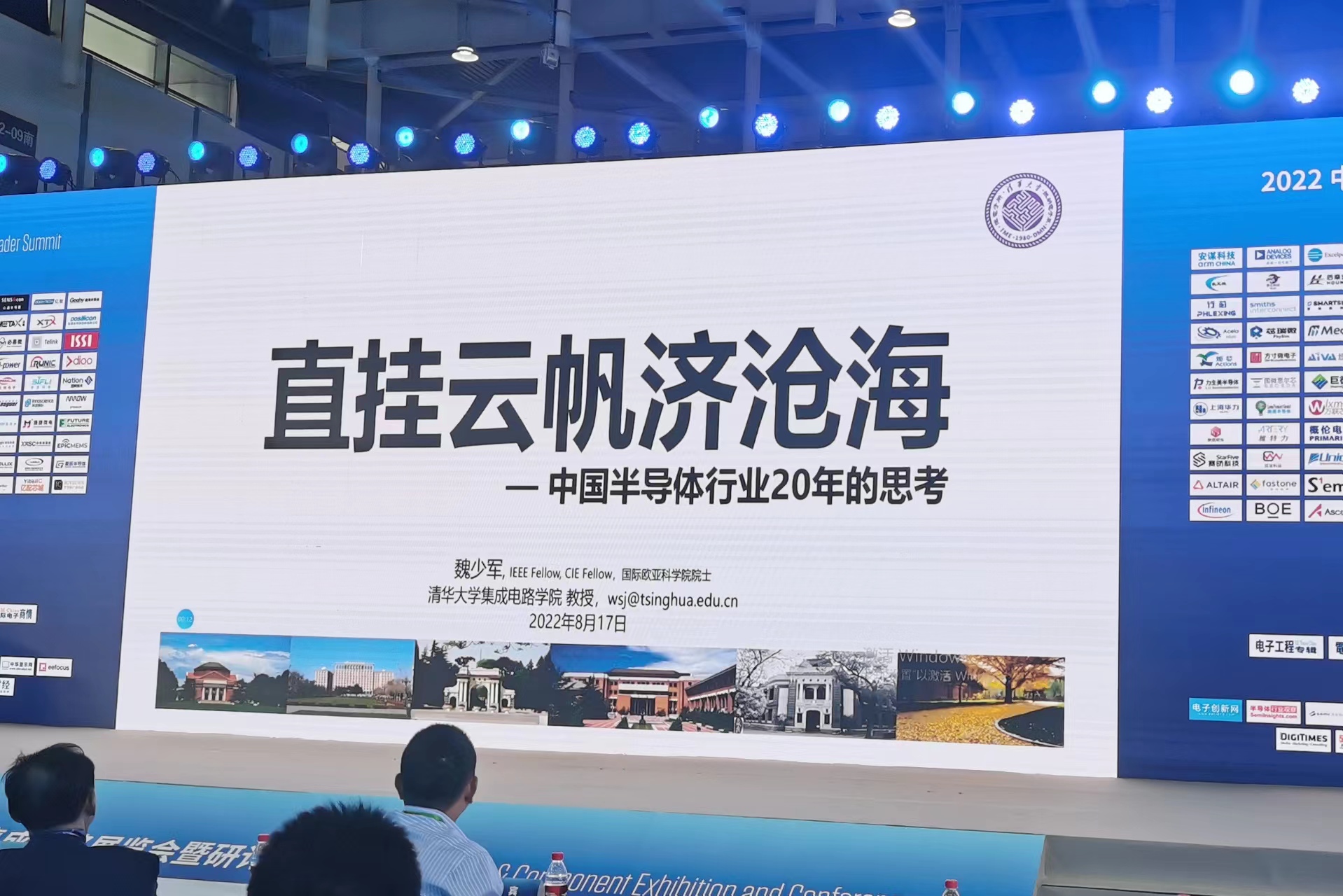
By Li Panpan
In the wake of recent anti-corruption cases in China’s IC industry and new geopolitical changes, Chinese well-known professor Wei Shaojun expressed his optimism about the country’s IC industry, saying it “will develop better in the future with its vast market and all participants’ efforts, despite facing both external and internal challenges.
He addressed the International IC Exhibition and Symposium held by Aspencore media on August 17 in Nanjing of eastern China’s Jiangsu Province, JW Insights reported.
Wei Shaojun is chairman of the IC Design Branch of the China Semiconductor Industry Association and a professor at the IC School of Tsinghua University.

Reflecting on the past 20 years, Wei said that the rapid economic growth of China and the world had been mainly driven by the development of information technology.
Through efforts in the past few decades, China's IC industry has built up five complete sectors: design, manufacturing, packaging and testing, equipment, and materials, which are rare worldwide. Many Chinese companies have entered a relatively advanced position in some segments, such as semiconductor memory.
He attributed the industry’s progress to the long-term semiconductor investment mechanism. Among them, the first and second phases of the central-government-organized Big Fund have invested more than RMB340 billion ($50.04 billion) yuan.
Wei quoted more statistics to make his points: In 2021, the industry's revenue reached RMB1,045.8 billion ($153.93 billion) for the first time with a better industrial structure, including design, manufacturing, and packaging and testing. Among them, the design industry is the fastest growing sector, with a compound annual growth rate of 26.6%.
China is the largest single semiconductor market, with an output value of $192.5 billion, accounting for nearly 35% of the world’s total. And the competitiveness of China's IC products is still improving, especially in the field of high-end general-purpose chips. There were almost no high-end chips in the Chinese market before 2019.
China is in a very favorable development stage of industrial upgrading and development from the low-end, low-value-added, low-tech, and low productivity to the high-end, high-value-added, high-tech, and high productivity.
Wei pointed to China’s another favorable factor that the country is both the world’s factory and world’s market. As the world’s factory, more can be produced in China; When some products become excessive overseas, there are domestic markets to digest them. In the short term, it will remain unchanged that China is a world factory with hundreds of products the world needs depending on China. It creates an important condition for China’s semiconductor development.
He also referred to shortcomings in China's manufacturing industry: “For a long time, China has positioned its development on manufacturing, and now China should turn to a product-centered industrial development model.
To be specific, he emphasized that IDMs similar to those in the U.S., Europe, and Japan are more suitable for China, with more than 1.4 billion consumers and a geographical spread out of over 5,000 kilometers. The development models of Singapore and the Taiwan region, starting with more assembling for others, are unsuitable for China.
Another problem in China is that the innovation capabilities of Chinese enterprises are still very weak and limited in scale and profitability. New approaches are needed to boost the innovation ability of Chinese companies.
He suggested that Chinese semiconductor companies focus on their advantages and fully use the opportunities brought by the development of the 5G mobile communication technology. "Although the main feature of the current 5G technology is only the faster network speed, it is enough to drive the development of VR/AR and other industries and build a trillion-yuan-level market."
Referring to challenges the country faces in the semiconductor industry, he said, “China can address the internal challenges, but external challenges won’t change at its will. Therefore, we need to think more about what problems we will encounter, how to solve them, and make corresponding preparations to avoid being in a hurry when facing them.”
RELATED
-
Local governments in China come up with policies to support AI development in 2023
11-17 19:12 -
NBS: China’s specialized equipment manufacturing industry for semiconductor devices sees 33.9% surge in value added in October
11-17 17:41 -
China's high-tech manufacturing loans see significant increase
11-14 17:08
READ MOST

No Data Yet~







